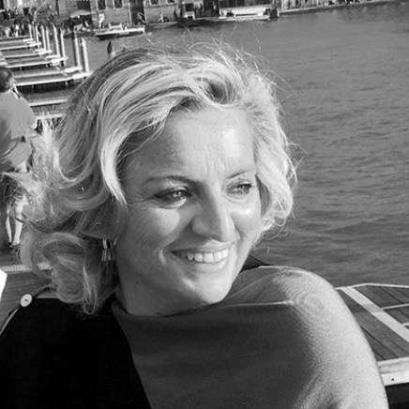The Global Art Histories lecture series is organized jointly by the VISU research group and the Art History and Archeology program and aims to introduce global, post-colonial, and decolonial perspectives on art and visual culture. These perspectives are crucial for understanding the complex histories and power dynamics that shape artistic practices and visual representations, fostering a more inclusive and critical approach to art history.
Attendance is free. Please confirm your participation by mail.
About the lecture
Uzbekistan Avant-Garde in the Desert. The lecture intends to address the birth of painting in Turkestan and outline the development of a peculiar phenomenon, the Avant-garde Orientalis. Until now, even the most original artists working in Central Asia in the Thirties and Forties were usually considered merely as a peripheral and marginal development of the great Russian Avant-Garde that was shaped from 1898 to 1922 by an extraordinary generation of artists. Here we can see the genesis and development of a genuine national school that include Volkov, Karakhan, Kashina, Korovay, Tansykbaev, and Usto Mumin, Ufimtsev and others. On the one hand we have to observe a precocious, intensely modern nucleus and the artist’s ability to absorb and reverberate all the major Western European experiences, and on the other hand the transformation of all these influences into an original, multi-ethnic and interdisciplinary language. Moreover, bringing together artists from Uzbekistan, Kazakhstan, Armenia, East Russia and Siberia created an intercultural equal dialogue between them. Almost all of artists studied in Moscow and St. Petersburg (ex. Leningrad), but then found roots in a land that they discovered and where they chose to live and work. The Avanguardia Orientalis is hence inclusive, bringing artists together in mutual exchange – collaboration and sharing common roots.
There will also be a focus on the life and work of Igor Savitsky, a man who was essential to preserving and disseminating many aspects of 20th-century art and Uzbek Cultural Heritage. In the middle of the desert in Karakalpakstan, in the north-western part of Uzbekistan, Savitsky established one of the largest collections of Russian avant-garde art in the world, second in magnitude only to that of the Russian Museum in St. Petersburg. His museum is a rare testimony to one of the most important artistic movements in 20th-century Russian history. Savitsky had a background as an archaeologist, then also became a painter out of pleasure and talent, and a collector out of obsession. From the end of the 1950s until the 1970s he collected thousands of archaeological finds, plus handicrafts and folk art specimens from the Nukus region, to which he added thousands of paintings and graphic works from Uzbekistan and the Soviet Union. The result is what we could call a "synthetic museum". Savitsky had been displaced during World War II in Turkestan and artists who had lived and worked there as well were also the focus of his interest. In the Nukus Desert, he revived the roots of modern Uzbek art. In conclusion, the lecture will discuss the exhibition experiences in Florence and Venice, and analyze the new layout of the museum in Nukus.

About the speaker
Prof. Dr. Silvia Burini is Professoressa Ordinaria (full ordinary professor) of History of Russian Art, History of Contemporary Art, and Contemporary Art Curatorship at Ca’ Foscari University of Venice, where for over ten years she has directed the Center for Studies in Russian Art (CSAR). Since 2011 she has been a member of the scientific committee of Cyberfest – the International Cyber Art Festival and since 2019 she has been part of the artistic committee of the Russian Pavilion at the Venice Biennale. She is a member of SHERA, the Society of East European, Eurasian and Russian Art and Architecture, and a member of the Expert Committee for the prize Russky Rim (Russian Rome). Moreover, she was a member of the Expert Committee of Innovation Prize organized by the National Centre for Contemporary Arts (NCCA, Moscow).
In 2014 she was awarded the high honor “Pushkin” for her contribution to the dissemination of Russian culture and art. Since the same year, she was an honorary member of the Academy of Arts of Russia. She was the scientific advisor for the Russia/USSR area for the new Encyclopedia of contemporary art published by Treccani. She has recently written (with G. Barbieri) three monographs for Rizzoli New York, the first about Alexander Ponomarev (2020), the second about Cristina Finucci (2021), and the last one on the artist’s collective AES+F (May 2022). At the beginning of 2022, a volume she edited and conceived was published: it collects all essays by Yuri Lotman’s Semiotics on the arts (Il Girotondo delle muse. Semiotica delle arti, Milano, Bompiani).
She is currently writing an extensive volume on the History of Russian art for the publishing house Einaudi. She was Vice-Rector for Cultural Productions and Relations with the Scientific and Cultural Institutions of Ca’ Foscari University of Venice from 2011 to 2014 and a member, in the same years, of the Board of Directors of the Bevilacqua la Masa Foundation (Venice). From 2017 to 2020 at the Department of Philosophy and Cultural Heritage, she was responsible for public engagement, communication, and events. Since 2018 she is vice-coordinator of the International Ph.D. programme in the History of Arts at Ca' Foscari. She is the supervisor of doctoral theses in art history in Italy, Russia, and Spain and post-doc projects in France. Since 2019 she co-directs the journal of the Department of Philosophy and Cultural Heritage “Venezia Arti”. In 2019 she conceived and ever since directs the Summer School “Contemporary Art and Curatorship: from documenta to the Biennale", in collaboration with the University of Kassel, within the SIE - School of International Education at Ca’ Foscari University. In 2010 she created Art Night Venezia, of which she has been the scientific director ever since.
